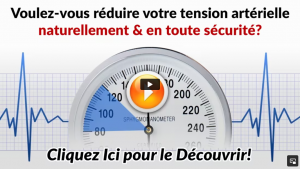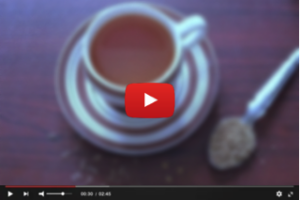Can Lowering Your Blood Pressure Reduce Headaches? Find Out Here

Can Lowering Your Blood Pressure Ease Your Headaches? Let’s Explore
Getting to Know Blood Pressure and Headaches
We all know about blood pressure, but how often do we really think about its day-to-day impact? And headaches—well, chances are you’ve felt one sooner or later. When you start wondering if there’s a direct link between high blood pressure and those pesky head pains, you’re not alone. In this piece, we’re diving into what blood pressure actually means for our bodies, unpacking the many flavors of headaches, and explaining why keeping tabs on both can be a game changer for your overall health. We’re keeping things friendly and chatty while mixing in the right dose of medical know-how so that everyone from the curious to the expert can follow along.
Whether it’s that slight headache you get on a stressful day or a more intense, pounding pain, we’re here to dig into how blood pressure might be playing a role. Backed by years of clinical insight and solid research, we’re offering you an evidence-based look at how changes in your blood vessels can lead to head pain. So, let’s jump in and break things down into bite-sized bits that make sense, no heavy medical jargon allowed!
What Exactly Is Blood Pressure?
Think of blood pressure as the force your blood uses to push against your arteries' walls. It’s given to you in two numbers measured in millimeters of mercury (mmHg): one for when your heart beats (systolic) and the other for when it’s at rest (diastolic). Beyond being something your doctor checks regularly, this measurement gives you a peek into your cardiovascular health. Knowing the ins and outs of blood pressure helps you spot even those subtle hints that something might be off—especially when headaches start popping up.
A Closer Look at Different Types of Headaches
Headaches come in all shapes and sizes. There’s the classic tension headache, which often tags along after a long day of stress or muscle strain. Then there are migraines—which can hit you hard with nausea, light sensitivity, or even visual disturbances—and cluster headaches that come cubed in bursts of intense pain. Figuring out which kind you’re dealing with can really help pinpoint potential triggers, including high blood pressure, which in some cases might be the spark that lights the flame.
Why Understanding Both Blood Pressure and Headaches Is Key
The link between blood pressure and headaches isn’t just a neat piece of trivia—it’s really important when it comes to preventing and treating these issues. Whether it’s a sudden blood pressure spike nudging you toward a headache or chronic pressure creating silent triggers, keeping an eye on both can make all the difference. Here, we want to underscore that monitoring your blood pressure isn’t just for keeping your heart in check—it can also be a critical ally in managing headache pain. By understanding this connection, many find the motivation to adopt lifestyle changes and seek timely medical advice.
How Blood Pressure and Headaches Interact
It’s not uncommon to see a high blood pressure episode either before or right along with a headache. The relationship is a complex one, involving hormones, changes in your blood vessels, and nerve responses. When blood pressure goes up, the increased vascular resistance can cause your head’s blood vessels to either swell or tighten—the very dynamics that often lead to that throbbing ache. By grasping this interplay, you can start to recognize what might trigger your headaches and think about ways to stave them off.
Look a bit closer, and you’ll see that these pressure variations really affect the delicate vessels in your brain. When they stretch or become a little inflamed, they send out signals that lead to headache pain. So, this link between blood pressure and headaches isn’t just coincidental. It’s a built-in response of your body to stress and vascular changes, highlighting why regular monitoring can be a lifesaver.
How High Blood Pressure Can Set Off Headaches
High blood pressure often doesn’t throw up red flags until you feel that headache coming on. When your blood pressure climbs too high, it can cause tiny tears or ramp up sensitivity in the nerve-rich zones of your brain. This, in turn, triggers a cascade of pain signals that can make your headache both more intense and more frequent. In essence, the stress of elevated blood pressure is like fuel on the fire of a vascular headache.
But there’s more—the anxiety from dealing with recurring head pain can actually push your blood pressure even higher! It’s a bit of a vicious cycle. So if you’re noticing headaches along with symptoms like blurred vision, breathlessness, or even chest pain, it’s your body’s way of waving a red flag that it might be time for a medical check-up.
Diving Into the Mechanisms: Blood Pressure and Headache Connection
The processes linking blood pressure to headaches are as intriguing as they are complex. One major player here is your autonomic nervous system—the body’s command center for things you don’t even think about. When blood pressure spikes, your autonomic nerves might release chemicals that cause your head’s blood vessels to behave abnormally—either constricting or dilating in unexpected ways. This can disrupt the natural flow of blood, sparking that familiar headache pain. Add in a bit of inflammation from the high pressure, and your nerves essentially get on high alert.
Factor in hormonal influences like stress hormones (hello, adrenaline!), and it becomes clear why the connection between blood pressure and headaches isn’t random at all. It’s all part of your body’s intricate communication network. Understanding these processes not only sheds light on why headaches happen but can also help in crafting more targeted strategies for prevention and treatment.
Scientific Perspectives on Blood Pressure and Headaches
Over time, research has really helped demystify the link between vascular changes and headaches. Studies show that people with chronically high blood pressure are prone to vascular headaches because of the wear and tear on their blood vessels. Modern imaging even lets scientists peek into real-time changes in blood flow during headache episodes, revealing that swift blood pressure shifts could be a major culprit behind severe head pain.
Focus has also turned to microvascular changes and endothelial dysfunction—when the inner lining of your blood vessels doesn’t work quite as it should because of high pressure. This dysfunction not only messes with your blood pressure but also disturbs the balance of chemicals that help manage pain and inflammation. So, the connection between blood pressure and headaches isn’t just guesswork—it’s backed by solid, ongoing research.
Shining a Light on Vascular Changes
A ton of research has shown how changes in your blood vessels, brought on by high blood pressure, can lead to headaches. By watching patients over time, scientists have noticed patterns—the dilation and constriction of blood vessels often kickoff unexpected head pain. One key insight is that increased resistance in your blood vessels forces your body into overdrive, sometimes triggering those intense headaches.
What’s more, managing blood pressure effectively—whether through medication or lifestyle tweaks—often brings down the severity and frequency of headaches. This reinforces the idea that improving the health of your blood vessels isn’t just good for your heart; it’s a win for headache relief too.
How Blood Flow Influences Headache Pain
Blood flow is critical when it comes to the intensity of your headache. When the flow of blood gets disrupted or fluctuates wildly, it can affect how much oxygen and nutrients your brain receives, which might ramp up pain sensitivity. This is especially true for those suffering from vascular headaches, where even tiny shifts in blood flow can make a big difference in the pain level.
Many healthcare providers now stress that keeping your blood flowing smoothly isn’t just about good cardiovascular health—it’s key to managing headache pain, too. Whether it’s through simple breathing exercises, regular physical activity, or relaxation techniques, any strategy that supports healthy blood flow can help keep those headaches in check.
Catching the Signs: When Blood Pressure and Headaches Collide
Spotting the early warning signs of high blood pressure can be a real lifesaver, and these signals sometimes show up alongside headaches. A persistent headache that just doesn’t quit, unexplained dizziness, or even shortness of breath can all be clues that your blood pressure might be off balance. Often, people don’t realize something’s amiss until a more severe symptom prompts them to dig deeper.
It’s important to figure out the type of headache you’re facing. While tension headaches typically bring a steady, dull pain, migraines might come with nausea and light sensitivity. Knowing the difference can help you choose a better treatment strategy. If you’re repeatedly hit with severe headaches along with signs like a flushed face, blurry vision, or a racing heartbeat, it’s definitely time to talk to your doctor. Early intervention can help you tackle both the headache and the underlying blood pressure issues.
And if you’re juggling other risk factors—like a sedentary lifestyle, obesity, or a family history of heart issues—keeping tabs on your blood pressure is even more critical. Recognizing these signs early can not only ease your headache woes but also ward off potential long-term heart problems.
Lifestyle Tweaks to Tame Blood Pressure and Headaches
Sometimes the simplest changes can pack the biggest punch. Adjusting your diet, getting into regular exercise, and dialing down on stress are fantastic ways to manage both your blood pressure and those unwelcome headaches. Cutting back on salt and loading up on fresh fruits and veggies can make a world of difference—not only for your blood pressure but also for reducing headache frequency.
Regular exercise is another secret weapon. Whether it’s a brisk walk, a swim, or even a session of yoga, getting your body moving helps ease stress (a common headache trigger) and boosts your overall cardiovascular health. Plus, exercise releases natural endorphins that improve your mood and dull the pain.
Don’t underestimate the power of good sleep and proper hydration either. Keeping a steady sleep schedule helps stabilize your blood pressure, and staying well-hydrated can ward off dehydration-related headaches. You don’t have to revamp your life overnight—even small tweaks, like skipping caffeine in the evening and drinking a bit more water during the day, can really add up over time.
Medical and Alternative Approaches to Treatment
Of course, lifestyle changes aren’t the only solution. When headaches or high blood pressure stick around, medical treatments come into play. Over-the-counter pain relievers like NSAIDs can offer temporary relief, but they’re not a fix-all—especially if you’re dealing with chronic high blood pressure. Sometimes, doctors recommend prescription medications that tackle both high blood pressure and the vascular triggers behind headaches.
There’s also a growing interest in complementary therapies. Acupuncture, biofeedback, and even herbal remedies are gaining traction as helpful additions to traditional treatments. These approaches can work hand-in-hand with prescribed medications to create a balanced plan that tackles the issue from all angles. Whatever route you take, it’s always a smart move to chat with your healthcare provider about the best strategy for you.
Taking Charge of Your Health: Monitoring and Self-Care
In our digital world, keeping track of your health has never been easier. With tools like digital blood pressure monitors and smartphone apps designed to log your headache patterns, you can stay on top of your condition day by day. Regularly recording your metrics not only helps spot trends but can also alert you before things escalate. It’s all about being proactive in your health journey.
Another helpful trick is to keep a simple diary of your headaches and blood pressure readings. Jot down when your headache starts, how long it lasts, what might have triggered it, and your blood pressure numbers. This ongoing record can be a goldmine of information when discussing your symptoms with a doctor, helping fine-tune your treatment plan and lifestyle adjustments.








